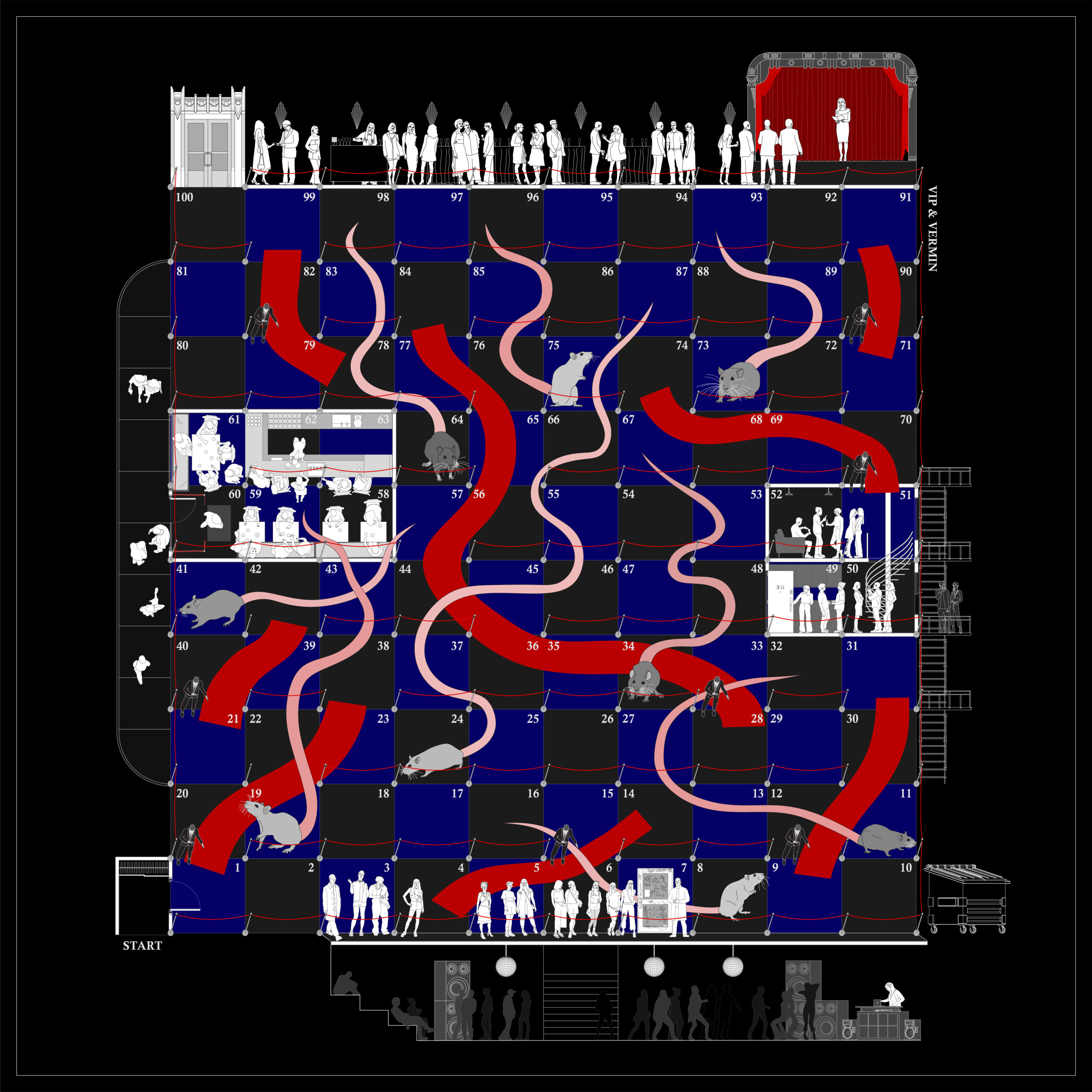Office Party: Door Policy
One of six installations for the digital exhibition by winners of the 2024 League Prize.
Through velvet ropes, guest lists, bouncers, dress codes, and posted hours of operation, the door to a party is established as a contentious threshold—the line that governs who is and is not allowed to participate. In these scenarios, the door itself proves to be insufficient to mediate entrance, requiring the supplement of a policy and its techniques, devices, and signals of enforcement to control what happens at the point of entry. Parties are unpredictable—they can be planned for, but the interaction between people, music, lights, and substance consumption always leads to unanticipated turns in the events of the evening. The door is one of few points of control in a party, and its policies determine the selection of attendees that will drive the night onward.
Door Policy invites visitors to take part in a non-linear night of partying to think on the promises of inclusive gathering and the many ways the materiality of their regulation often lead to exclusive ends.
Play Door Policy here: doorpolicy.xyz
Door Policy allows its visitors to explore the apparatus of entry beyond the door itself, directing them to think about the techniques of exclusion and their architectural dependencies. Night-outers have to navigate their way across four different parties: a club night, a bar happy hour, institutional gala, and gallery opening after party.
Each respective party comes with its own door, door policy, and its most common techniques of enforcement ranging from objects (e.g. ropes, stanchions, lights) to observers (e.g. bouncers, bartenders) and the documents that mediate between (e.g. guest lists, posters, dress codes, hours of operation).
As a digital installation of the 2024 League Prize, this project intends to serve as a point of reflection on the institution’s own ability to open its doors to the public as well as the intended or unintended ways it may exercise exclusion. The party is not a form unfamiliar to various New York architectural platforms and has, to a large extent, been a fundamental mechanism through which they have sought to engage various publics. Despite invoking the party—or gallery-talk, reception, gala, etc.—as a strategy of promoting inclusive engagement, explicit and implicit policies and expectations for attendance operate as mediating devices that divide the public off the street from the institution’s patrons. Door Policy considers the common techniques of street-level mediation deployed by the party to exhibit the seen and unseen ways the door divides the city from a cosmos of interaction that lies on the other side.
This drawing—which you might call VIP & Vermin as opposed to Chutes & Ladders—serves to draw out the boundaries, both tangible and intangible, that demarcate access to sites of public gathering beyond the door frame. Irrespective of the door you’d hope to enter, sometimes you might feel as if you are a VIP being cast aside like vermin, or a vermin who has infiltrated a VIP space. By drawing lines of waiting in line and cutting in line at the entry to parties, we aimed to further illustrate the non-linearity that constitutes a night out, and the forms of anxiety that emerge when you are at the mercy of a (sometimes unknown) door policy.
Credits
Chase Galis, Christina Moushoul, and Sonia Sobrino Ralston


